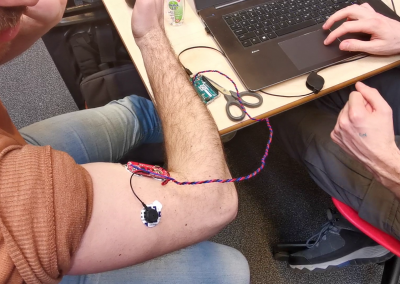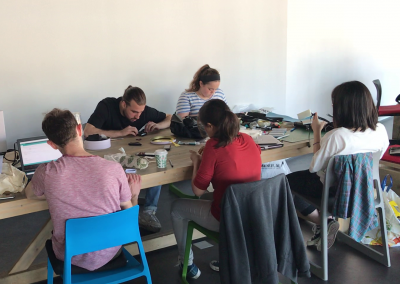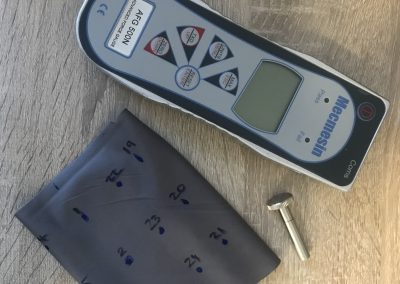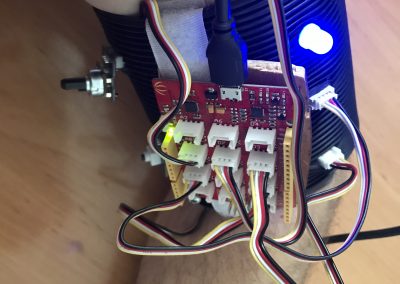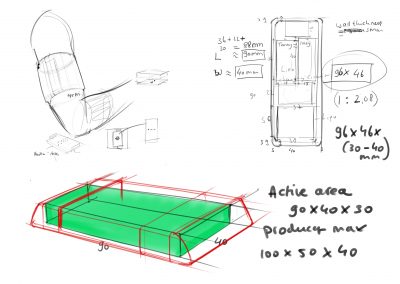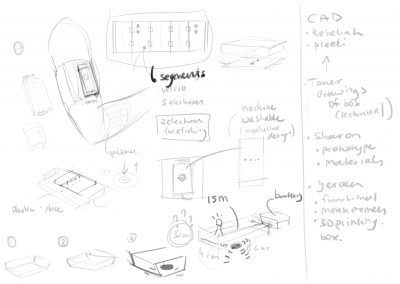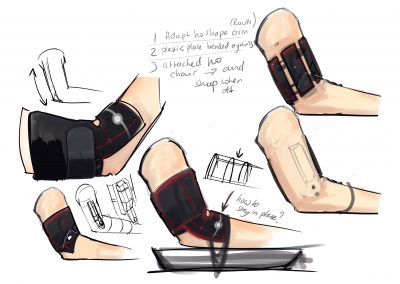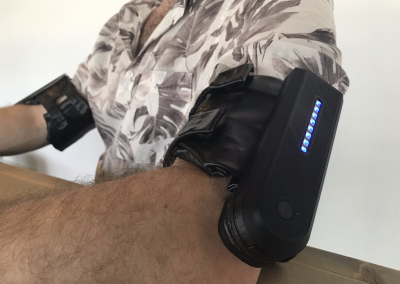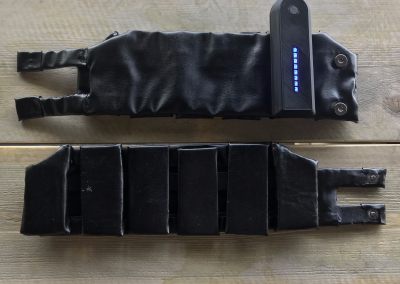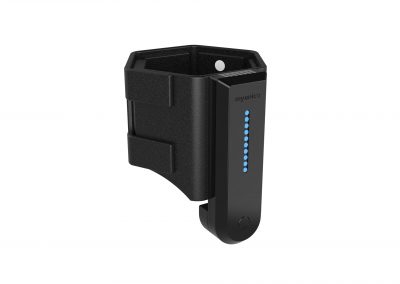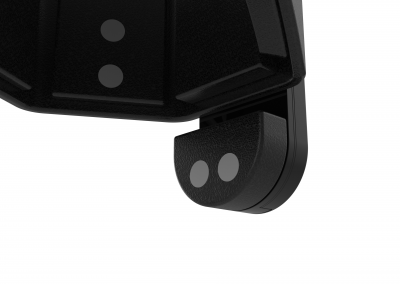+project


Goal
This project was part of the course Advanced Embodiment Design. The goal of this project was to design a wearable that assists men with Duchenne Muscular Dystrophy(DMD) in using computers for a prolonged period of time. This project is initiated by Yumen Bionics, Duchenne Parent Project and TU Delft. The video below shows the project summary.
Background
DMD is a progressive neuromuscular disease that mainly affects males. Recently, the average life expectancy has increased from teens to 30s. They are now able to attend college and start careers, where using a computer is essential. However, when these men enter into the late non-ambulatory stage of DMD, they are no longer able to move their arms or hands. After research on the background an interview was executed where we obtained more useful information about our user’s everyday life. A list of requirements was created and updated over time.
Development
The development of the device was divided into three main subsystems: Electronics, Software and Band attachment. In order to develop and test these subsystems, two types of prototypes were created: Band attachment and Interaction. The band attachment was designed by extensive research and having expert consultation. Material research was done by trial-and-error and doing tests.
Through literature research and testing, the muscles in which the EMG sensors were to be placed were selected. Then prototypes were developed, with each design iteration having focus areas. These areas include ergonomics, pressure sensitivity, product experience, electronics integration, material testing, attachment and placement, cleaning, and not interfering with existing equipment.
The needs and wants of caregivers were also taken into consideration, as they will be attaching the device and cleaning it. The interaction prototypes incorporated the software and electronics subsystems. Through dozens of iterations, signal processing was developed to accurately interpret the intent of the user from the EMG signal and translate it into cursor movement.
Design
After getting an idea on how the subsystems were a connected and interacting, we then started a co-creation session on how they all were integrated. Starting out with the hardware: one board with a battery and a Bluetooth receiver. Next, a schematic helped us to create the first shapes of the electronics encasing. Lastly the connection to the band-attachment was developed.
Result
The device will be further developed and optimized by Yumen Bionics. It will revolve around merging the band attachment and interaction prototypes into one device. With this comes integrating a dongle Bluetooth connection and adding an application with a Graphical User Interface to further customize the device to each user’s EMG signal strength.
Further testing is to be conducted with men with DMD to determine the range of signal strengths and the most effective muscle movements to complete each cursor action. When the final solution is complete, men with DMD will be able to operate their computers seamlessly.
Project
The tools used for this project consisted of foam neoprene/soft plastics, faux leather, card board, Velcro, thread, rubber, Lycra/Spandex, dry electrodes(EMG Sensor) and Arduino. The apps we used were Photoshop, Arduino IDE, After Effects, Illustrator, Solidworks, Ender Creality and Google Forms.
I was responsible for the secondary interaction features of the product, testing, co-creation, design drawing supporting 3D development, concept development, material testing, rapid prototyping, encasing architecture, ergonomics and user testing.
James Dyson Awards
I am very excited to let you know that we are one of the runners up in the national James Dyson Awards and that we have been selected in the top 20 of international projects.

